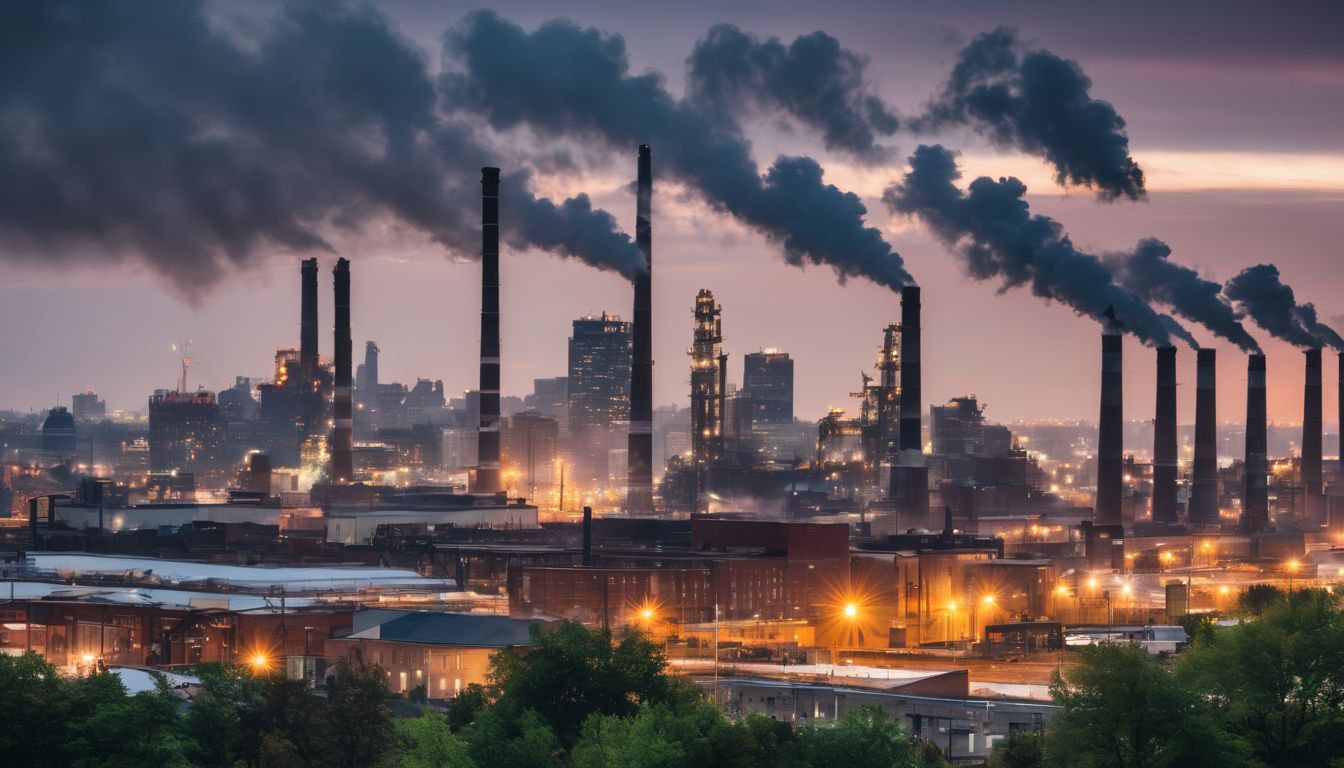In recent years, global warming has been a heavily debated topic. It is widely understood that our planet is warming at a faster rate than usual, but the cause of this warming remains in conflict. The Earth does have a natural cycle of warming and cooling, but the warming process has increased significantly over the past century. In our lifetime, eleven of the last twelve years rank among the hottest years on record.1 So what is driving this significant increase in temperature?
Global warming can be considered a result of natural causes. Whether it is volcanic eruptions, sunspots, or even the rotation of the Earth, many would argue that certain natural events are causing warmer global temperatures. However, as the Earth is experiencing an accelerated rate of warming, it is also experiencing an increase of greenhouse gases in the atmosphere. Greenhouse gases are responsible for warming the planet by absorbing and emitting infrared radiation from the sun in a process known as the greenhouse effect.
The most abundant greenhouse gases in our atmosphere include water vapor, carbon dioxide, methane, nitrous oxide, and ozone. Many of these gases are released into our atmosphere at an alarming rate by human activity. The United Nations Intergovernmental Panel on Climate Change (IPCC) confirmed “the current level of carbon dioxide, a critical heat-trapping gas in the atmosphere, ‘exceeds by far the natural range over the last 650,000 years.’ Since the dawn of the industrial era, carbon dioxide and other key heat-trapping gases have increased at a rate that is ‘very likely to have been unprecedented in more than 10,000 years.’”2 Therefore, human-caused emissions are often considered the culprit of global warming. Of the following gases broken down by human-caused emissions, carbon dioxide is responsible for about 72% of total emissions, methane is responsible for about 18%, and nitrous oxide for 9% :
Power Stations: carbon dioxide, nitrous oxide
Waste Disposal and Treatment: methane, nitrous oxide
Land Use and Biomass: carbon dioxide, methane, and nitrous oxide
Residential, Commercial, and other sources: carbon dioxide, methane, and nitrous oxide
Industrial Processes: carbon dioxide, methane, nitrous oxide
Transportation: carbon dioxide, nitrous oxide
Agriculture Byproducts: carbon dioxide, methane, nitrous oxide
Fossil Fuel Retrieval, Processing, and Distribution: carbon dioxide, methane
Water vapor and ozone are also naturally occurring greenhouse gases that increase in concentration with human-caused emissions. Warmer temperatures cause more humidity, and more humidity means more water vapor. Water vapor absorbs infrared radiation, therefore warming the Earth. Ozone, however, is naturally found in the upper troposphere and acts as a greenhouse gas. In the past century, it has been found more highly concentrated at ground level where it is considered a pollutant or smog. As human activity is increasing the overall concentrations of these greenhouse gases, it can therefore be considered responsible for an accelerated rate of warming.
All of the greenhouse gases that are emitted by human activity have different heat-trapping abilities and can stick around in the atmosphere for decades. Therefore, if human emissions were reduced significantly today, the Earth would still experience warming from the lingering gases in the atmosphere. The IPCC has also confirmed that if we do not reduce our emissions from cars, power plants, and other sources, there will be twice as much warming over the next two decades than if we had stabilized heat-trapping gases at the levels in the year 2000. Aside from the changes in temperatures, it is also predicted that :
• Future tropical cyclones (typhoons and hurricanes) will become more intense, with higher peak wind speeds and heavier precipitation associated with warmer tropical seas.
• If global average temperatures were to exceed 1.9 to 4.6 degrees C (3.4 to 8.3 degrees F) compared to pre-industrial temperatures, the Greenland ice sheet would lose mass faster than it gains, producing a net contribution to sea level rise. If sustained, the loss of ice would eventually lead to complete elimination of the Greenland ice sheet and contribute an additional 23 feet to sea level rise.
• A greater than 90 percent likelihood that hot extremes, heat waves, and heavy precipitation events will continue to become more frequent.
Obviously, the debate over global warming remains controversial. Regardless of whether it is caused by nature or human activity, scientists on both sides of the debate are working to explore the cause and effects of global warming because the effect could be devastating for the planet, as we know it. Although the cause is still a point of contention, it is widely understood, however, that human-caused emissions are polluting our atmosphere. The pollution is affecting our air, land, water, and every living species on Earth. And whether or not this is causing global warming, it is causing an impact on our planet. As a living species, it is our responsibility to take care of our planet to the best of our ability—and at the same time, possibly even reduce the rate of global warming for future generations.




